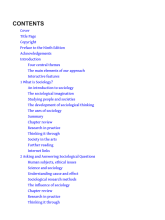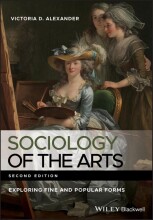Diversity and Inclusion
3 important questions on Diversity and Inclusion
In their article on inequalities in the creative industries, Eikhof and Warhurst (2013) argue that a major source of the prevailing inequalities in these industries stems from the myth of meritocracy.
Can you explain what they mean by this?
- The myth of meritocracy is connect to the idea of Richard Florida that creative talent, which is not monopolized by any one social group, drives the creative industries.Therefore, academics and policymakers have promoted the creative industries as a means for equality.
- Eikhof and Warhurst dispute this claim.
- To explain why inequalities in the CCIs persist, the focus should be on the nature and structure of creative work.
- Especially the project-based production in the creative industries.
Saha and van Lente (2022) talk about diversity in the publishing industries. Their main point of critique is that quantitative approaches to the diversity 'problem' do not solve it but rather serve to maintain the authority and economic power of the dominant, often unraced, group.
Which arguments do they use to substantiate this criticism?
- Authors of color need to conform to 'Whiteness'.
- Publishers wanting the same but different.
- Have to fulfil racialized expectations from White middle-class editors regarding genre and subject matter.
- Have to fulfil marketing narratives of 'quality' (Oxbridge alumni) or 'authenticity' (from the streets).
- Race made as 'niche'.
- Authors of color having to fulfil expectations of what they can write about, but at the same time these stories are often considered 'too niche'.
- Eurocentric worldview as industry standard; writers of color are only valued in terms of appeal to what is perceived the main audience: White, middle-class readers.
What are the two main conclusions we can draw from the article of Saha and van Lente (2022) about diversity in the publishing business?
- Ambivalence of diversity discourse.
- Diversity discourse appears to address the demands of minoritized groups, while in reality, it is more catered towards maintaining the privilege of White middle-class culture.
- On the other hand, it also holds a disruptive potential due to the tensions between top-down neoliberal agendas and grassroots antiracist activism.
- Failing promotion of diversity.
- Promotion of diversity through quantitative approaches to the 'problem' do not solve it but rather serve to maintain the authority and economic power of the dominant, often unraced, group.
The question on the page originate from the summary of the following study material:
- A unique study and practice tool
- Never study anything twice again
- Get the grades you hope for
- 100% sure, 100% understanding































